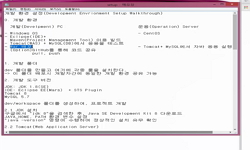NDVI(Normalized Difference Vegetation Index)는 기후 변화 모니터링과 식생 변화 탐지 모니터링을 위한 주요한 지표이며 주로 단일 기간 합성 자료 형태로 널리 활용되고 있다. 원격탐사 된 식생지수 자...
http://chineseinput.net/에서 pinyin(병음)방식으로 중국어를 변환할 수 있습니다.
변환된 중국어를 복사하여 사용하시면 됩니다.
- 中文 을 입력하시려면 zhongwen을 입력하시고 space를누르시면됩니다.
- 北京 을 입력하시려면 beijing을 입력하시고 space를 누르시면 됩니다.
https://www.riss.kr/link?id=A104484238
-
저자
박수재 (부경대학교) ; 한경수 (부경대학교) ; 피경진 (부경대학교) ; Park, Soo-Jae ; Han, Kyung-Soo ; Pi, Kyoung-Jin
- 발행기관
- 학술지명
- 권호사항
-
발행연도
2010
-
작성언어
Korean
-
주제어
Harmonic analysis ; NDVI ; MVC ; Time-series ; Noise
-
등재정보
KCI등재,SCOPUS,ESCI
-
자료형태
학술저널
- 발행기관 URL
-
수록면
403-410(8쪽)
-
KCI 피인용횟수
4
- DOI식별코드
- 제공처
- 소장기관
-
0
상세조회 -
0
다운로드
부가정보
국문 초록 (Abstract)
NDVI(Normalized Difference Vegetation Index)는 기후 변화 모니터링과 식생 변화 탐지 모니터링을 위한 주요한 지표이며 주로 단일 기간 합성 자료 형태로 널리 활용되고 있다. 원격탐사 된 식생지수 자료는 전처리 과정을 거치게 되지만 제거되지 못한 cloud pixel, 대기 효과, 지면의 상태 등으로 인하여 NDVI 값이 저평가(low peak)되는 noise가 발생하게 된다. 이러한 문제점을 해결하기 위해 국내 외 연구가 활발히 진행되고 있으며 최근 높은 값(high peak)을 추적하는 방법인 다중 다항 회귀식을 이용하여 noise를 보정하는 방법이 개발되었으나 부분적으로 참값보다 과대 평가되는 문제점이 있다. 따라서 본 연구에서는 과대 평가되는 문제점을 해결하고자 조화 분석을 이용하여 low peak 탐지 후 보간하는 종합적인 기법을 개발하였다. 이를 검증하기 위해 SPOT/VGT NDVI 10-day MVC 자료를 이용하여 다중 다항 회귀식을 이용한 방법과의 비교 분석을 수행한 결과 전반적인 식생 지수의 시계열 특성이 잘 나타났고 NDVI 실제 값(raw value)을 보다 현실적으로 재생산하여 조화 분석을 이용한 방법이 더 우수한 것으로 판단된다.
다국어 초록 (Multilingual Abstract)
NDVI(Normalized Difference Vegetation Index), which is broadly used as short-term data composite, is an important parameter for climate change and long-term land surface monitoring. Although atmospheric correction is performed, NDVI dramatically appea...
NDVI(Normalized Difference Vegetation Index), which is broadly used as short-term data composite, is an important parameter for climate change and long-term land surface monitoring. Although atmospheric correction is performed, NDVI dramatically appears several low peak noise in the long-term time series. They are related to various contaminated sources, such as cloud masking problem and wet ground condition. This study suggests a simple method through harmonic analysis for reducing NDVI noise using SPOT/VGT NDVI 10-day MVC data. The harmonic analysis method is compared with the polynomial regression method suggested previously. The polynomial regression method overestimates the NDVI values in the time series. The proposed method showed an improvement in NDVI correction of low peak and overestimation.
참고문헌 (Reference)
1 Miura, T., "Vegetation detection through smoke-filled AVIRIS images: An assessment using MODIS band passes" 103 (103): 32001-32011, 1998
2 Gutman, G., "The derivation of vegetation indices from AVHRR data" 8 : 1235-1243, 1987
3 Viovy, N., "The Best Index Slope Extraction (BISE): A method for reducing noise in NDVI time-series" 13 (13): 1585-1590, 1992
4 Eidenshink, J. C., "The 1 km AVHRR global land data set: first stages in implementation" 15 (15): 3443-3462, 1994
5 L.Monika Moska, "Temporal signatures and harmonic analysis of natural and anthropogenic disturbances of forested landscapes: a case study in the Yellowstone region" 15-19, 2005
6 Jonsson, P., "Seasonality extraction by function fitting to time-series of satellite sensor data" 40 (40): 1824-1832, 2002
7 Prince, S. D., "Satellite remote sensing of rangelands in Botswana.Ⅱ. NOAA AVHRR and herbaceous vegetation" 7 : 1555-1570, 1986
8 Roerink, G. J., "Reconstructing cloudfree NDVI composites using Fourier analysis of time series" 21 (21): 1911-1917, 2000
9 Goward, S. N., "Normalized difference vegetation index measurement from the advanced very high resolution radiometer" 35 : 257-277, 1991
10 Moody, A., "Land-surface phenologies from AVHRR using the discrete Fourier transform" 75 : 305-323, 2001
1 Miura, T., "Vegetation detection through smoke-filled AVIRIS images: An assessment using MODIS band passes" 103 (103): 32001-32011, 1998
2 Gutman, G., "The derivation of vegetation indices from AVHRR data" 8 : 1235-1243, 1987
3 Viovy, N., "The Best Index Slope Extraction (BISE): A method for reducing noise in NDVI time-series" 13 (13): 1585-1590, 1992
4 Eidenshink, J. C., "The 1 km AVHRR global land data set: first stages in implementation" 15 (15): 3443-3462, 1994
5 L.Monika Moska, "Temporal signatures and harmonic analysis of natural and anthropogenic disturbances of forested landscapes: a case study in the Yellowstone region" 15-19, 2005
6 Jonsson, P., "Seasonality extraction by function fitting to time-series of satellite sensor data" 40 (40): 1824-1832, 2002
7 Prince, S. D., "Satellite remote sensing of rangelands in Botswana.Ⅱ. NOAA AVHRR and herbaceous vegetation" 7 : 1555-1570, 1986
8 Roerink, G. J., "Reconstructing cloudfree NDVI composites using Fourier analysis of time series" 21 (21): 1911-1917, 2000
9 Goward, S. N., "Normalized difference vegetation index measurement from the advanced very high resolution radiometer" 35 : 257-277, 1991
10 Moody, A., "Land-surface phenologies from AVHRR using the discrete Fourier transform" 75 : 305-323, 2001
11 염종민, "Identification of Contaminated pixels in 10-day NDVI image" 300-301, 2005
12 Jakubauskas, M. E., "Harmonic analysis of time-series AVHRR NDVI data" 67 : 461-470, 2001
13 Stowe, L. L., "Global distribution of cloud cover derived from NOAA/AVHRR operational satellite data" 11 (11): 51-54, 1991
14 Holben, B. N., "Characteristics of maximum value compositing imagines for AVHRR data" 7 : 1417-1437, 1986
15 Swets, D. L., "A weighted least-squares approach to temporal smoothing of NDVI smoothing" 526-536, 1999
16 Y. Richard, "A statistical study of NDVI sensitivity to seasonal and interannual rainfall variations in Southern Africa" 19 (19): 2907-2920, 1998
17 Chen, J., "A simple method for reconstructing a highquality NDVI time-series data set based on the Savitzky-Golay filter" 91 : 332-344, 2004
18 White, "A continental phenology model for monitoring vegetation responses to interannual climatic variability" 11 (11): 217-234, 1997
동일학술지(권/호) 다른 논문
-
- 대한원격탐사학회
- 이정훈 ( Jung Hoon Lee )
- 2010
- KCI등재,SCOPUS,ESCI
-
봄철 황사탐지를 위한 정지궤도위성 적외선 채널의 배경경계값 적용 가능성 연구
- 대한원격탐사학회
- 홍성재 ( S. J. Hong )
- 2010
- KCI등재,SCOPUS,ESCI
-
영상 강조를 위한 Adaptive Dynamic Range Linear Stretching 기법
- 대한원격탐사학회
- 김용민 ( Yong Min Kim )
- 2010
- KCI등재,SCOPUS,ESCI
-
- 대한원격탐사학회
- 박수재 ( Soo Jae Park )
- 2010
- KCI등재,SCOPUS,ESCI
분석정보
인용정보 인용지수 설명보기
학술지 이력
| 연월일 | 이력구분 | 이력상세 | 등재구분 |
|---|---|---|---|
| 2027 | 평가예정 | 재인증평가 신청대상 (재인증) | |
| 2021-01-01 | 평가 | 등재학술지 유지 (재인증) |  |
| 2018-01-01 | 평가 | 등재학술지 유지 (등재유지) |  |
| 2015-01-01 | 평가 | 등재학술지 유지 (등재유지) |  |
| 2011-01-01 | 평가 | 등재학술지 유지 (등재유지) |  |
| 2009-01-01 | 평가 | 등재학술지 유지 (등재유지) |  |
| 2007-01-01 | 평가 | 등재학술지 유지 (등재유지) |  |
| 2006-07-24 | 학술지등록 | 한글명 : 대한원격탐사학회지외국어명 : Korean Journal of Remote Sensing |  |
| 2005-01-01 | 평가 | 등재학술지 유지 (등재유지) |  |
| 2002-07-01 | 평가 | 등재학술지 선정 (등재후보2차) |  |
| 2000-01-01 | 평가 | 등재후보학술지 선정 (신규평가) |  |
학술지 인용정보
| 기준연도 | WOS-KCI 통합IF(2년) | KCIF(2년) | KCIF(3년) |
|---|---|---|---|
| 2016 | 0.52 | 0.52 | 0.54 |
| KCIF(4년) | KCIF(5년) | 중심성지수(3년) | 즉시성지수 |
| 0.53 | 0.44 | 0.725 | 0.12 |





 ScienceON
ScienceON







